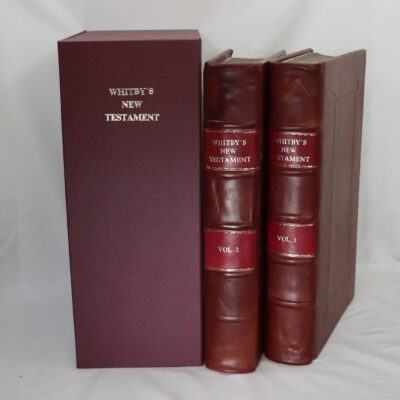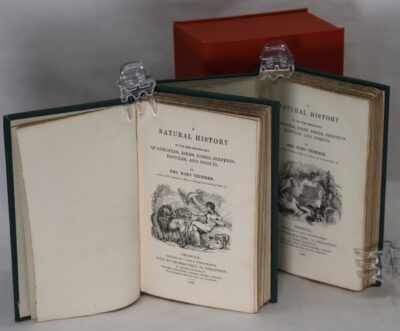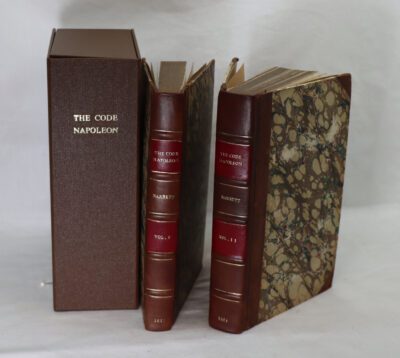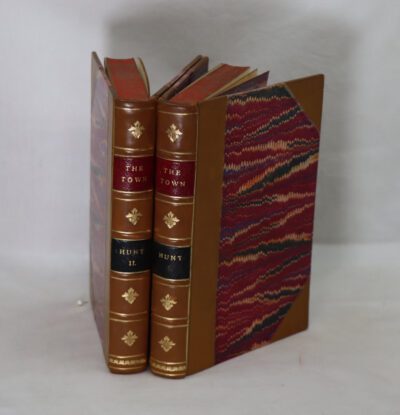The Hapsburgs.
By Andrew Wheatcroft
ISBN: 9780670854905
Printed: 2004
Publisher: The Folio Society. London
| Dimensions | 19 × 23 × 5 cm |
|---|---|
| Language |
Language: English
Size (cminches): 19 x 23 x 5
Condition: Fine (See explanation of ratings)
Item information
Description
In a fitted box. Yellow cloth binding with black title. Black Heraldic emblem on the front board.
F.B.A. provides an in-depth photographic presentation of this item to stimulate your feeling and touch. More traditional book descriptions are immediately available.
Endorsed by F.B.A. – F.B.A. is endorsing a range of collectable lovingly used books
As new, and very collectable
Sumptuous Folio Society edition of Wheatcroft’s great history of the Hapsburg dynasty. Bound in fine cloth. Top edge gilt. Decorated endpapers. Complete with gargantuan fold out family tree to rear. With colour images. Volume crisp and clean. Fine condition.
Reviews
‘I read this is a marvellous first approach to Central European history, politics and the Hapsburgs while skiing outside Innsbruck. Some chapters are full of impenetrable interconnections of treaties and relations and totally new facts, others are wholly intriguing and easy to read, like an easy novel. Remember, it is just the first toe into this area, you (I) must read more to try to decipher those difficult chapters. I recommend reading “the Hapsburgs” at one level, to make sightseeing in the Hapsburgs centres like Innsbruck more interesting and at another to understand how middle Europe buffers Western Europe from the Turks, Moslems, the Asian Hordes and the modern Communist Russian States. I now have a new area of interest.’
‘I have been looking for a book on the Habsburgs, how they rose to power and controlled Central European politics for some time. I was expecting more from this book. The book is well researched with an impressive bibliography. The author obviously knows his subject well. The early chapters were interesting about how the Habsburgs built their power and wealth. As the book progressed the main historical events were mentioned at best in passing, as in the case of Martin Luther and the Reformation and Counter-Reformation. The Thirty Year was also dismissed with little discussion. There was no details of the Habsburgs policy making. How did the Habsburgs form an Alliance with Great Britain against France and later Prussia. If it was about the family, there was no mention that King Phillip II was also King of England by his marriage to Queen Mary. The Emperor Charles V as a chapter devoted to him. He is mentioned several times in the context of paintings of him sitting on a horse. There are no pictures of Charles V in the book. The pictures are of poor quality as are the maps and family tree. These failing may be due to the editor and publisher than to the writer. The book is worth buying as a introduction to the Habsburgs and the their rise to power in Central Europe. But for a more detail book on the power and politics of Central Europe during the Habsburg reign, look elsewhere.’
‘I wanted to read this book as i am getting ready to visit Vienna in April. The book by Mr Wheatcroft is good because his account touches on several things that were really interesting. For example, the author explains the different personalities of the Holy Roman Emperors and Emperors of Austria.He also does a good job in explaining the times in which this emperors reigned which gives you a very good view of the circumstances at that time. I also enjoyed the motivation behind important buildings for the Habsburgs like El Escorial in Spain and the Catacombs in St Stephen Church in Vienna. For someone who
wants an introduction to the Habsburgs is a good book although it has several flaws. One is that the author ” jumps” from one event to another or from one emperor to the other. For example, he’ll be talking about Charles V and all of the sudden he starts talking about his sons or future emperors without letting you know about it.I found myself going back several paragraphs to understand why he was doing that. Second, he doesn’t really explain how the Holy Roman Empire gets started. He just mentions Charlemagne several times and the reader has to imagine the rest. His account sometimes is fast and sometimes is detailed which forced me to use other books with genealogies to help me understand which emperor is which and where does he come from. The other problem with this book is that it looks like the author thinks that the reader knows a lot of things so he doesnt describe or gives definition to events, people and places that i didn’t know. For example, Metternich is mentioned really fast and just by his last name, so if you don’t know who Metternich is, you’ll have to look for him in another book to know who he is.Besides its flaws, is a good book to get you started.’
Want to know more about this item?

Share this Page with a friend












